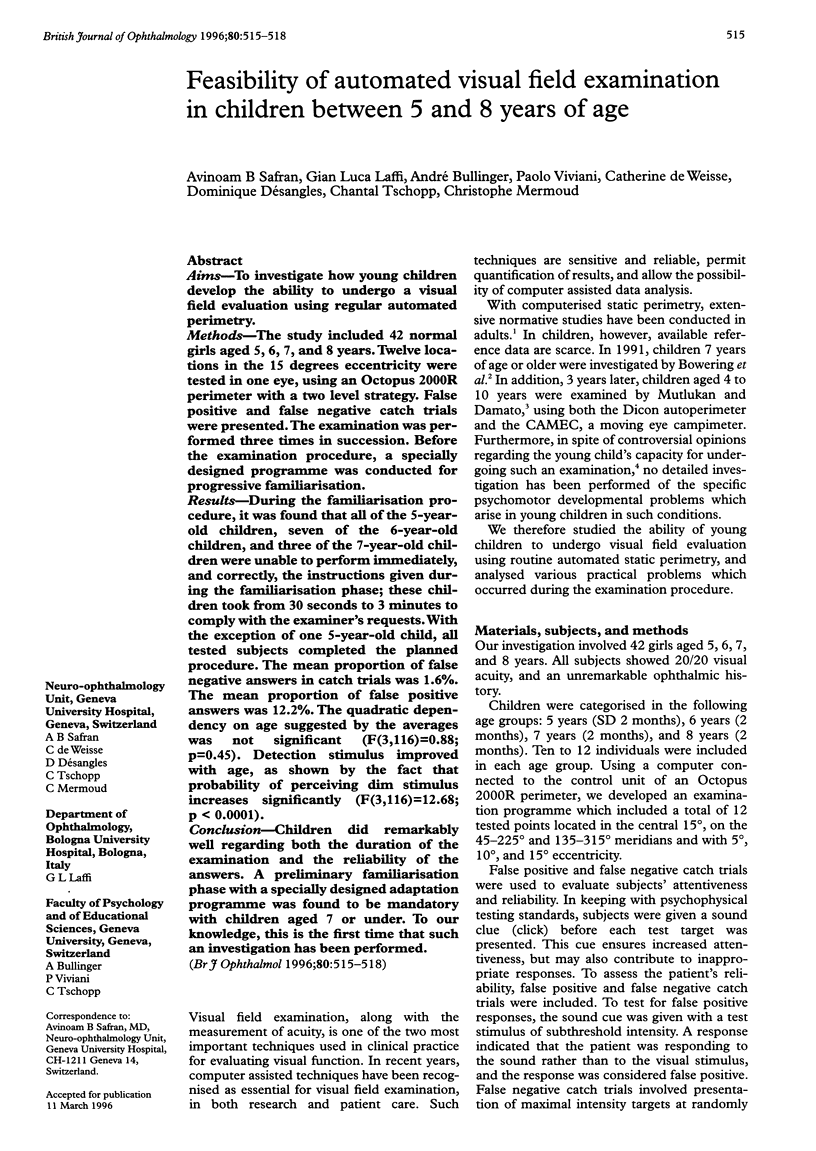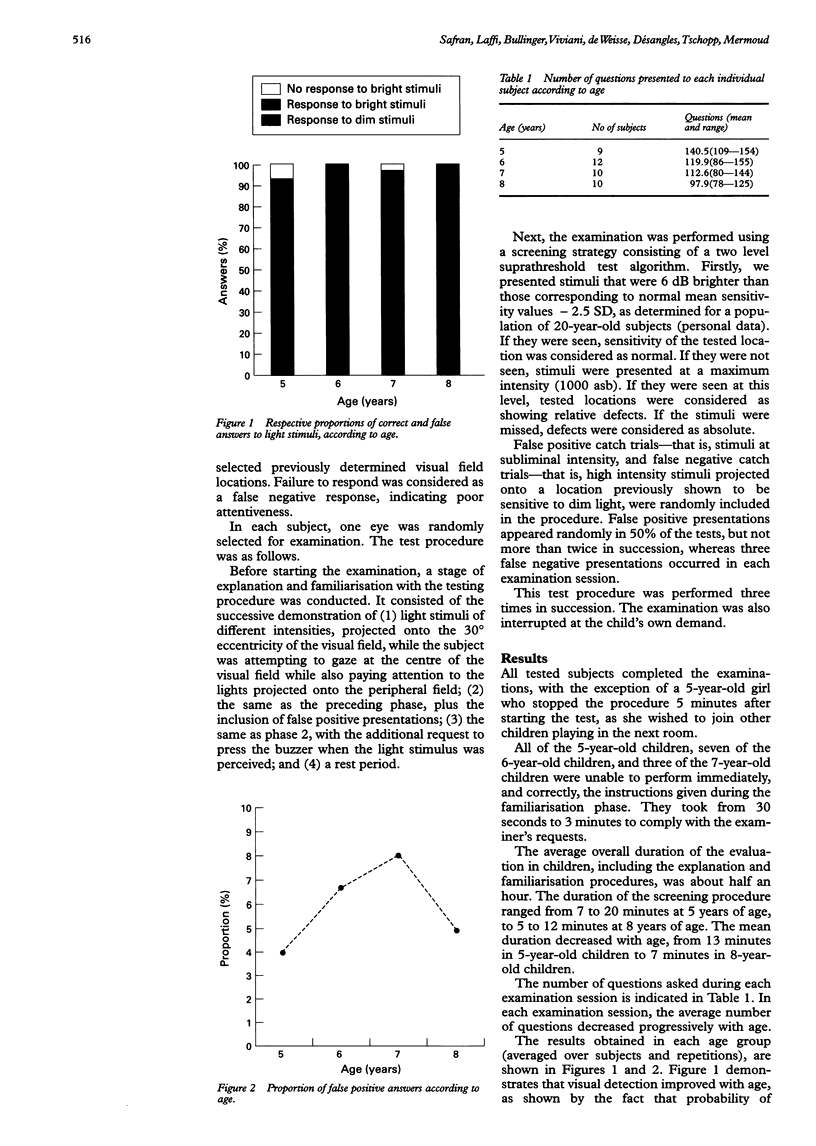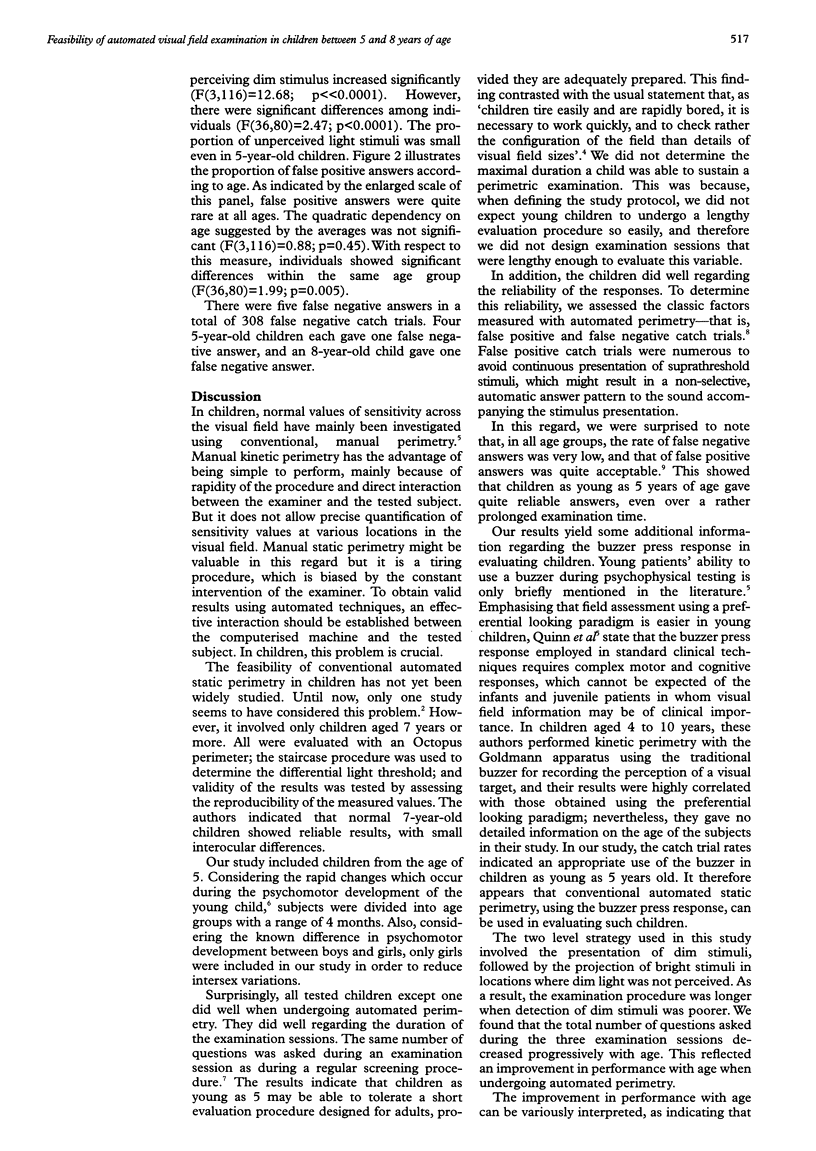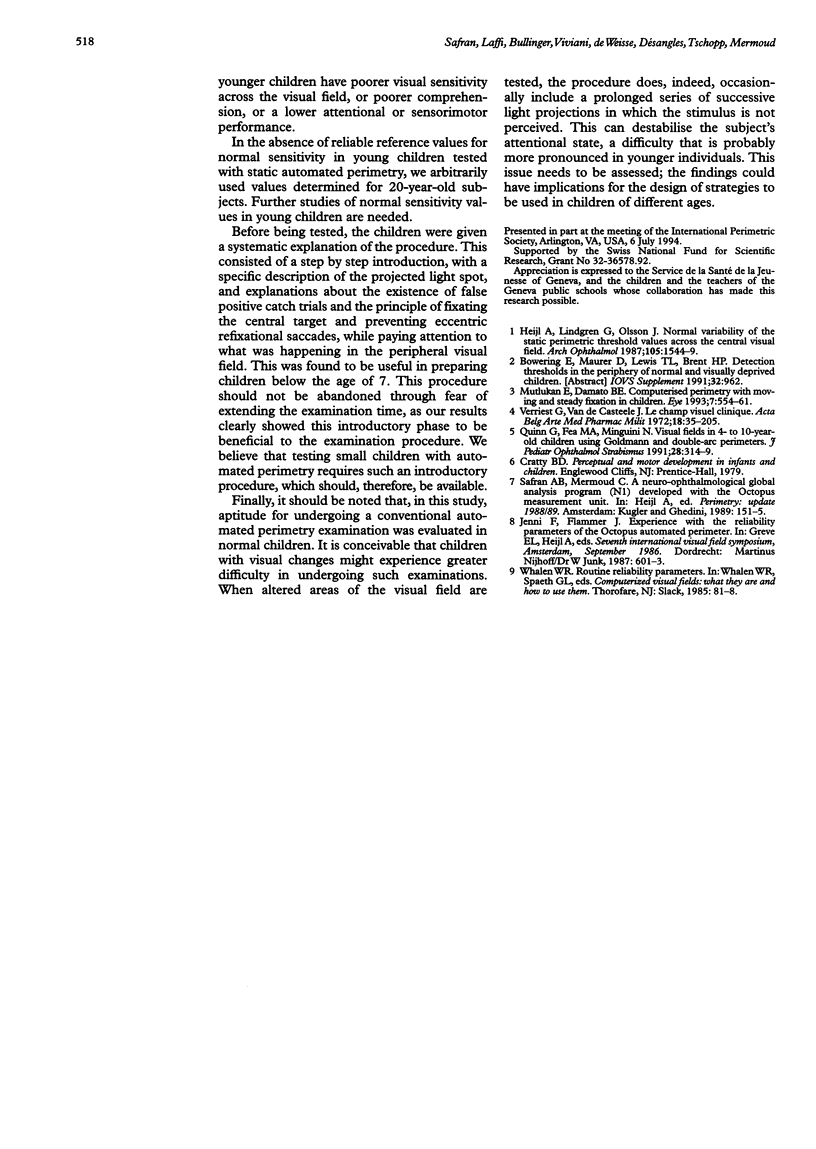Abstract
AIMS--To investigate how young children develop the ability to undergo a visual field evaluation using regular automated perimetry. METHODS--The study included 42 normal girls aged 5, 6, 7, and 8 years. Twelve locations in the 15 degrees eccentricity were tested in one eye, using an Octopus 2000R perimeter with a two level strategy. False positive and false negative catch trials were presented. The examination was performed three times in succession. Before the examination procedure, a specially designed programme was conducted for progressive familiarisation. RESULTS--During the familiarisation procedure, it was found that all of the 5-year-old children, seven of the 6-year-old children, and three of the 7-year-old children were unable to perform immediately, and correctly, the instructions given during the familiarisation phase; these children took from 30 seconds to 3 minutes to comply with the examiner's requests. With the exception of one 5-year-old child, all tested subjects completed the planned procedure. The mean proportion of false negative answers in catch trials was 1.6%. The mean proportion of false positive answers was 12.2%. The quadratic dependency on age suggested by the averages was not significant (F(3,116) = 0.88; p = 0.45). Detection stimulus improved with age, as shown by the fact that probability of perceiving dim stimulus increases significantly (F(3,116) = 12.68; p < 0.0001). CONCLUSION--Children did remarkably well regarding both the duration of the examination and the reliability of the answers. A preliminary familiarisation phase with a specially designed adaptation programme was found to be mandatory with children aged 7 or under. To our knowledge, this is the first time that such an investigation has been performed.
Full text
PDF



Selected References
These references are in PubMed. This may not be the complete list of references from this article.
- Heijl A., Lindgren G., Olsson J. Normal variability of static perimetric threshold values across the central visual field. Arch Ophthalmol. 1987 Nov;105(11):1544–1549. doi: 10.1001/archopht.1987.01060110090039. [DOI] [PubMed] [Google Scholar]
- Mutlukan E., Damato B. E. Computerised perimetry with moving and steady fixation in children. Eye (Lond) 1993;7(Pt 4):554–561. doi: 10.1038/eye.1993.121. [DOI] [PubMed] [Google Scholar]
- Quinn G. E., Fea A. M., Minguini N. Visual fields in 4- to 10-year-old children using Goldmann and double-arc perimeters. J Pediatr Ophthalmol Strabismus. 1991 Nov-Dec;28(6):314–319. doi: 10.3928/0191-3913-19911101-07. [DOI] [PubMed] [Google Scholar]


